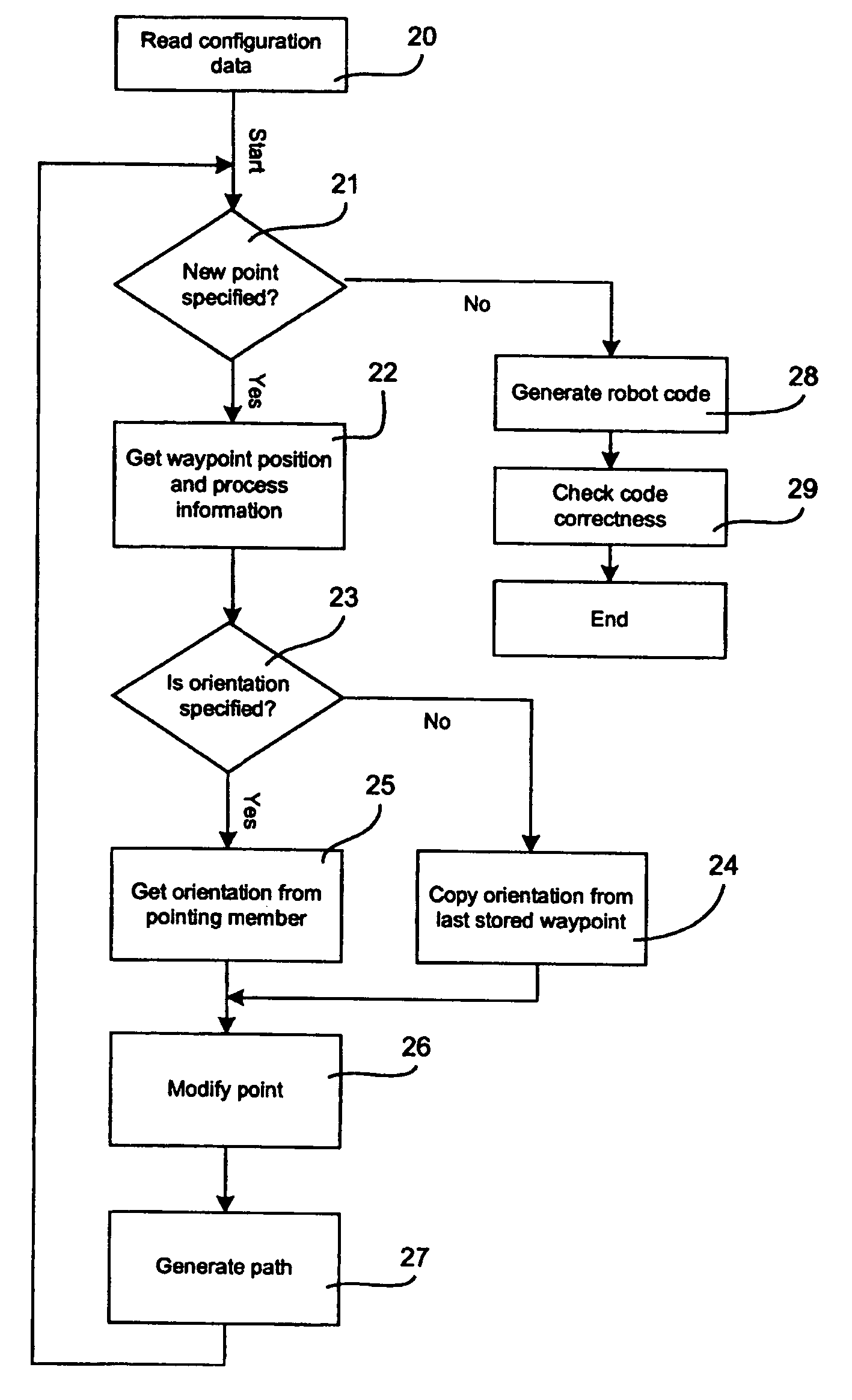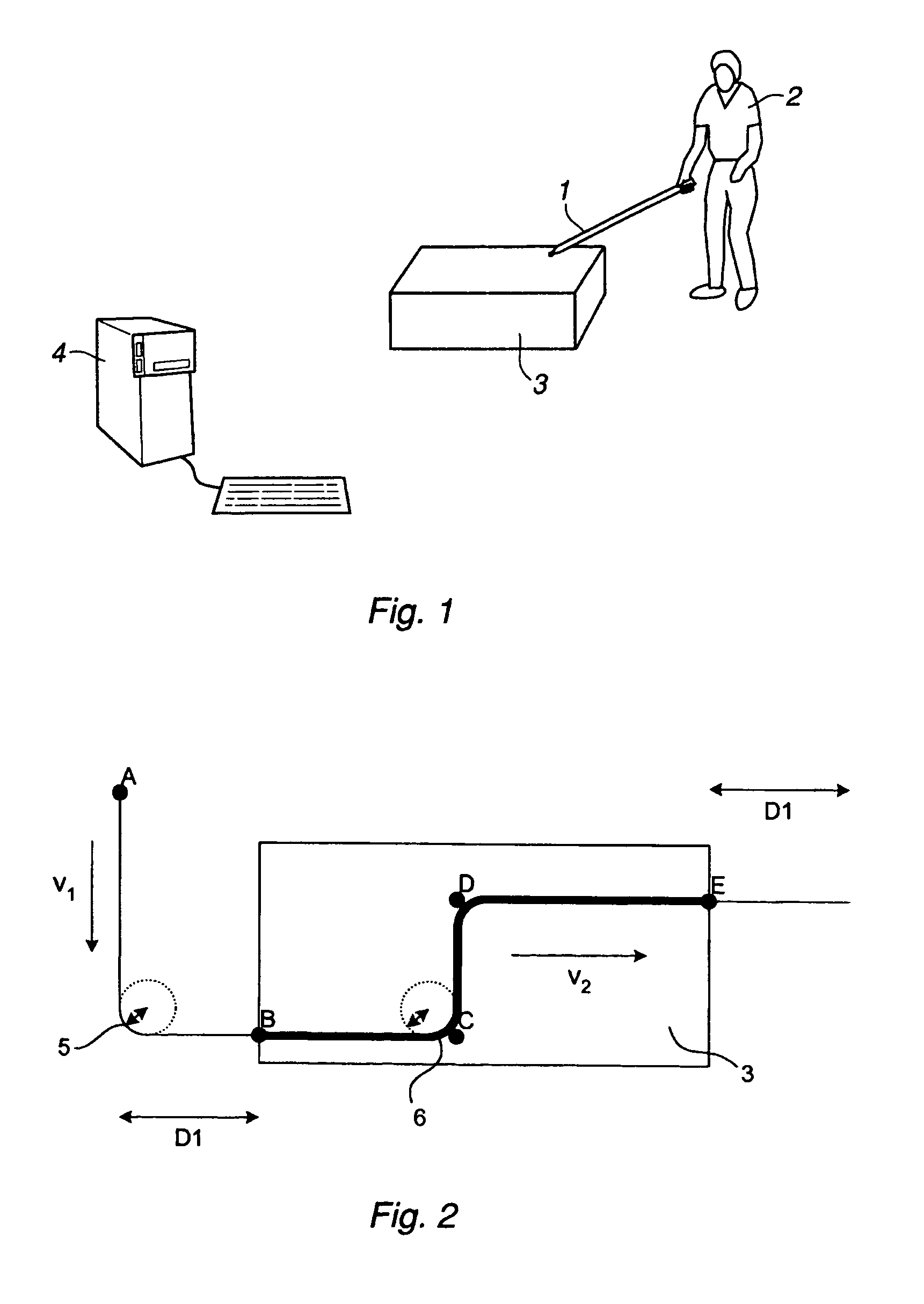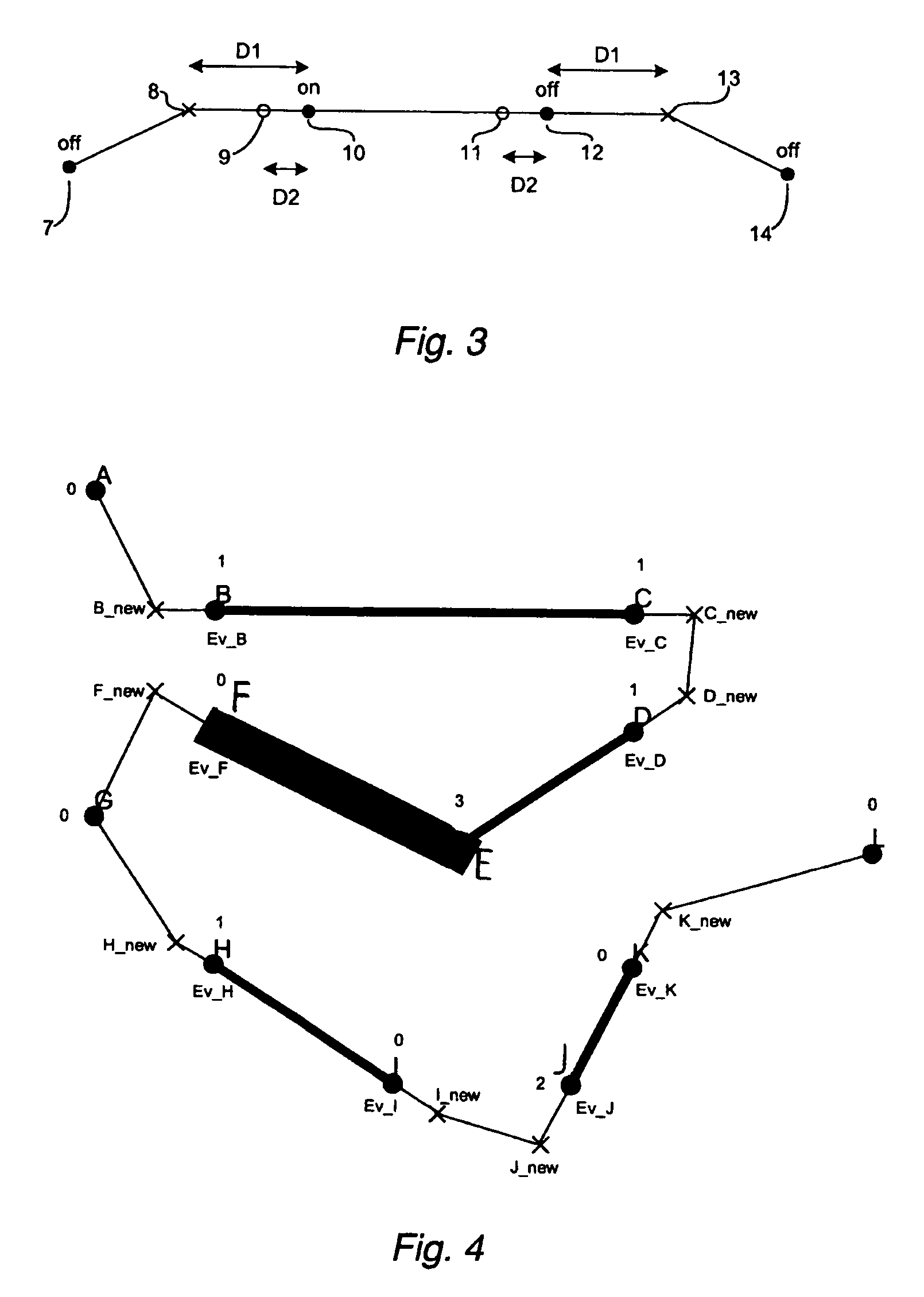Method and a system for programming an industrial robot
a robot and industrial technology, applied in the field of industrial robot programming, can solve the problem of reducing the total programming time, and achieve the effect of reducing teaching time and being easy and intuitive to us
- Summary
- Abstract
- Description
- Claims
- Application Information
AI Technical Summary
Benefits of technology
Problems solved by technology
Method used
Image
Examples
example
[0059]p. l.=[A, B_new, Ev_B, Ev_C, C_new, D_new, Ev_D, E, Ev_F, F_new, G]
[0060]move to A, default process parameter
[0061]move to B_new
[0062]move to C_new with events in Ev_B and Ev_C
[0063]move to D_new
[0064]move to E with event in Ev_D
[0065]move to F_new with event in Ev_F
[0066]move to G.
[0067]The robot code generated is the input to the robot controller. FIG. 5 shows the actual robot path generated based on the generated robot instructions.
[0068]FIGS. 6 and 7 are flow charts illustrating a method and a computer program product according to an embodiment of the present invention. It will be understood that each block of the flow chart can be implemented by computer program instructions. In block 20, configuration data are read into and stored in the system. In block 21, the system waits for new waypoints to be specified. When a new waypoint is specified, position and process information is obtained, block 22. In block 23, it is observed whether the obtained waypoint comprises inform...
PUM
 Login to View More
Login to View More Abstract
Description
Claims
Application Information
 Login to View More
Login to View More - R&D
- Intellectual Property
- Life Sciences
- Materials
- Tech Scout
- Unparalleled Data Quality
- Higher Quality Content
- 60% Fewer Hallucinations
Browse by: Latest US Patents, China's latest patents, Technical Efficacy Thesaurus, Application Domain, Technology Topic, Popular Technical Reports.
© 2025 PatSnap. All rights reserved.Legal|Privacy policy|Modern Slavery Act Transparency Statement|Sitemap|About US| Contact US: help@patsnap.com



